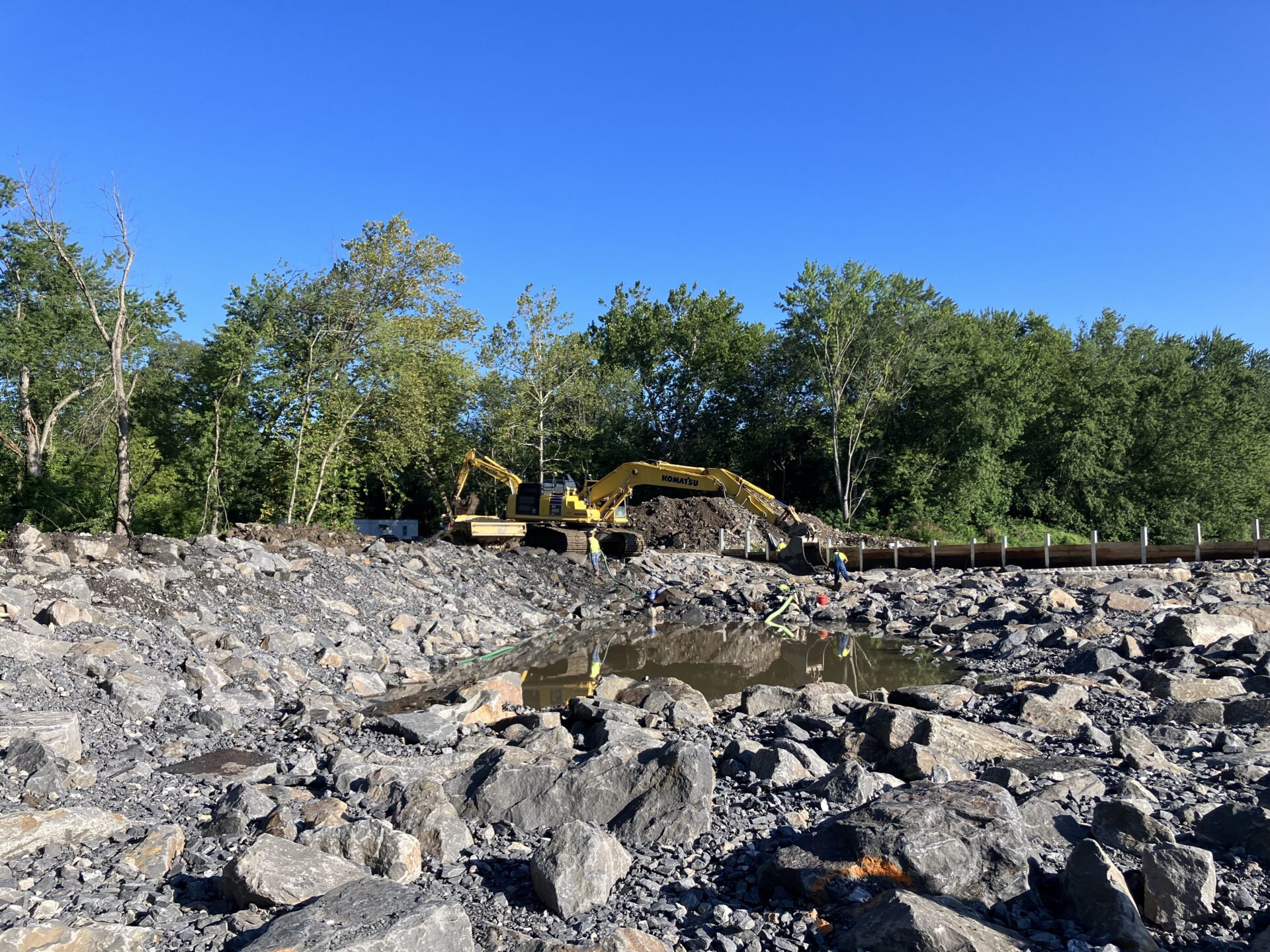Shikellamy Nature-like Fishway


The Pennsylvania DCNR required engineering support for the evaluation of an existing nature-like fishway (NLF) design and subsequent final design and construction support for the revised fishway at the Adam T. Bower Memorial Dam (an inflatable dam). The constructed fish bypass channel will provide for migratory fish passage when the dam is inflated. The DCNR had questions concerning the cost, maintenance obligations, and reliability of the original design and required changes to accommodate additional features.
Based on Kleinschmidt NLF success on other projects, DCNR requested that Kleinschmidt (as a subconsultant to their current engineer) review the earlier fishway design and develop a fishway design that better met their objectives. Kleinschmidt subsequently developed and summarized design criteria for evaluating a new fishway design and prepared conceptual design drawings. We held a workshop to discuss these with the DCNR, Pennsylvania Department of General Services, U.S. Fish & Wildlife Services, Pennsylvania Fish & Boat Commission, and other stakeholders. We prepared a two-dimensional hydraulic model of the selected fishway alternative to evaluate fishway hydraulics and prepared schematic and final fishway design documents, including technical specifications and cost input. We also developed an operations and maintenance (O&M) plan with recommendations for annual operations. Kleinschmidt’s construction role included reviewing submittals, responding to RFIs, and providing construction observation related to the fishway construction. Post-construction, Kleinschmidt collected water depth and velocity data to validate the HEC-RAS model, verified that the velocities and depths are suitable for fish passage, and compared this data with anticipated water and depths in the HEC-RAS model during the design.
Kleinschmidt’s collaborative design process has resulted in an NLF design that incorporates modifications to reduce construction and long-term O&M costs and improves overall performance of the fishway by providing variability in passage conditions. We optimized the design through hydraulic model iterations to meet constructibility constraints and fish passage criteria for several species of native migratory fish.
